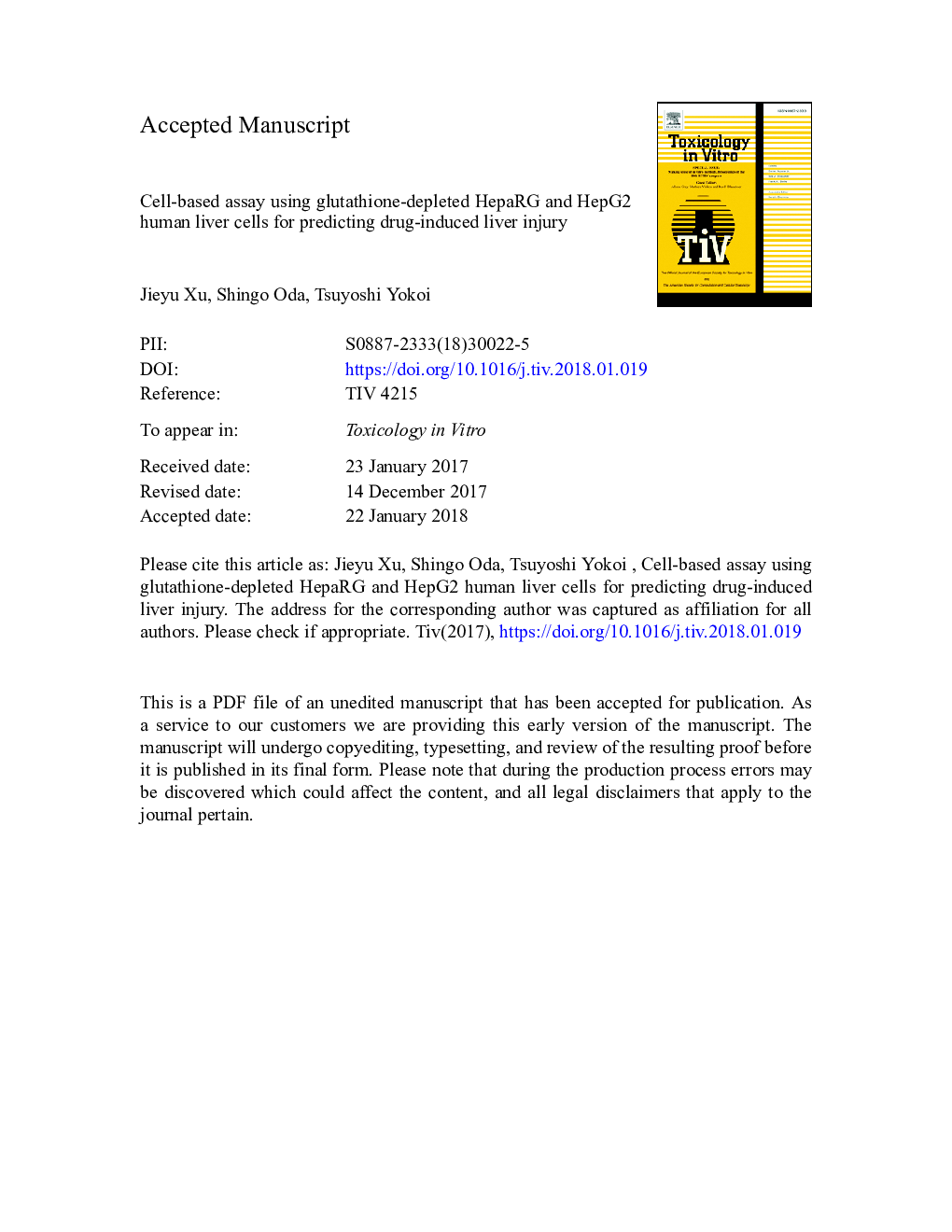| کد مقاله | کد نشریه | سال انتشار | مقاله انگلیسی | نسخه تمام متن |
|---|---|---|---|---|
| 8554025 | 1562697 | 2018 | 45 صفحه PDF | دانلود رایگان |
عنوان انگلیسی مقاله ISI
Cell-based assay using glutathione-depleted HepaRG and HepG2 human liver cells for predicting drug-induced liver injury
دانلود مقاله + سفارش ترجمه
دانلود مقاله ISI انگلیسی
رایگان برای ایرانیان
کلمات کلیدی
GSHFDAWRNL-buthionine-S,R-sulfoximineHepaRGBSOROCCyPCmaxFBSAUC - AUCDMSO - DMSOCell-based assay - آزمایش خون مبتنی بر سلولDrug-induced liver injury - آسیب کبدی ناشی از مواد مخدرDILI - دیلیDimethyl sulfoxide - دیمتیل سولفواکسیدfetal bovine serum - سرم جنین گاوCytochrome P450 - سیتوکروم پی۴۵۰lactate dehydrogenase - لاکتات دهیدروژناز LDH - لاکتات دهیدروژناز به صورت مختصر شده LDH Reactive metabolites - متابولیت های واکنشیArea under receiver operating characteristic curve - محدوده تحت منحنی مشخصه عامل گیرندهwarning - هشدارhigh-performance liquid chromatography - کروماتوگرافی مایعی کاراHPLC - کروماتوگرافی مایعی کاراGlutathione - گلوتاتیونreceiver operating characteristic - گیرنده عامل عامل
موضوعات مرتبط
علوم زیستی و بیوفناوری
علوم محیط زیست
بهداشت، سم شناسی و جهش زایی
پیش نمایش صفحه اول مقاله

چکیده انگلیسی
Immortalized liver cells have been used for evaluating the toxicity of compounds; however, excessive glutathione is considered to lessen cytotoxicity. In this study, we compared the effects of glutathione depletion on cytotoxicities of drugs using HepaRG and HepG2 cells, which express and lack drug-metabolizing enzymes, respectively, for predicting drug-induced liver injury (DILI) risks. These cells were pre-incubated with L-buthionine-S,R-sulfoximine (BSO) and then exposed to 34 test compounds with various DILI risks for 24â¯h. ATP level exhibited the highest predictability of DILI among tested parameters. BSO treatment rendered cells susceptible to drug-induced cytotoxicity when evaluated by cell viability and caspase 3/7 activity with the sensitivity of cell viability from 50% in non-treated HepaRG cells to 71% in BSO-treated HepaRG cells. These results indicate that cytotoxicity assays using GSH-depleted HepaRG cells improve the predictability of DILI risks. However, HepaRG cells were not always superior to HepG2 cells when assessed by ATP level. The combination of HepG2 and HepaRG cells index produced the best prediction in the cases of caspase 3/7 acitivity and ATP level. In conclusions, the developed highly sensitive cell-based assay using GSH-reduced cells would be useful for predicting potential DILI risks at an early stage of drug development.
ناشر
Database: Elsevier - ScienceDirect (ساینس دایرکت)
Journal: Toxicology in Vitro - Volume 48, April 2018, Pages 286-301
Journal: Toxicology in Vitro - Volume 48, April 2018, Pages 286-301
نویسندگان
Jieyu Xu, Shingo Oda, Tsuyoshi Yokoi,